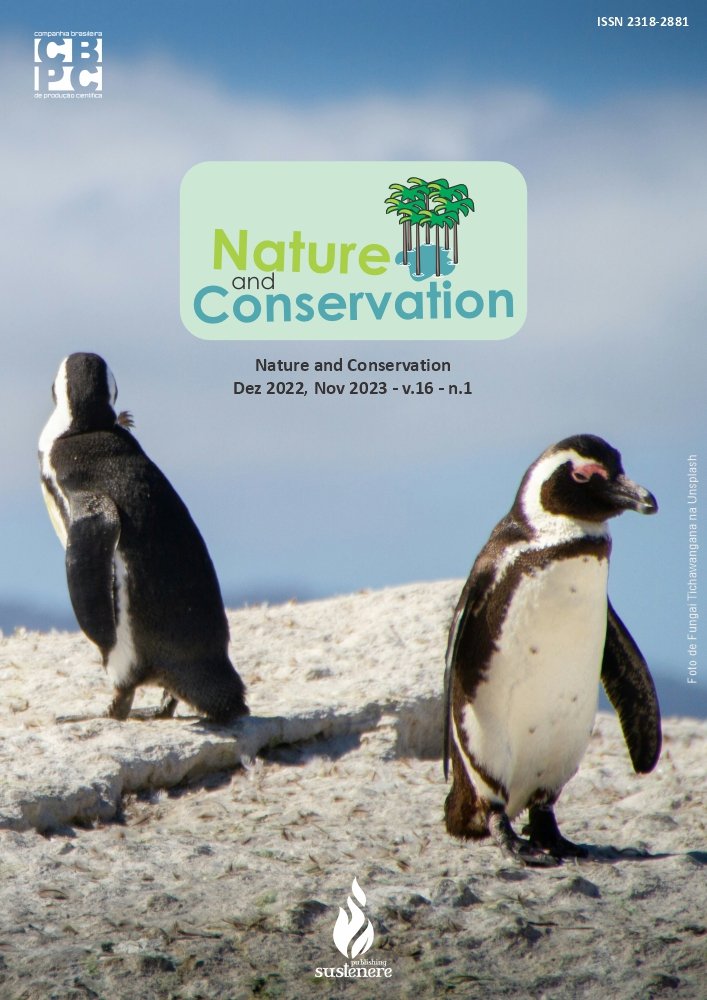Effect of herbicides applied in a jet directed between the lines and total area in the pineapple crop
DOI:
https://doi.org/10.6008/CBPC2179-6858.2021.012.0010Keywords:
Ananas comosus, Chemical control, Application technology, WeedAbstract
In the pineapple crop, competition with weeds is worsened by the fact that the crop is small in size and has a very slow vegetative development. In this sense, the use of herbicides for weed control becomes an efficient strategy, but there is a great lack of data regarding the effect of these products for weed control and selectivity when applied to pineapple crops. Therefore, the objective was to evaluate the effects of applications in directed jet (with napoleon hat) and in total area of herbicides in the control of weeds in an area cultivated with pineapple. The cultivar Pérola was planted at a spacing of 1.20 x 0.40 x 0.40 m and the experimental design was a randomized block, with treatments in a 10 x 2 factorial scheme, with four replications, in which the first factor represented the sulfentrazone herbicides. (700 g ia ha-1), diuron (3,200 g ia ha-1), clethodim (144 g ia ha-1), atrazine (3,000 g ia ha-1), hexazinone + diuron (396 + 1,404 g ia ha-1), S-metolachlor (1,920 g ia ha-1), trifluralin (1,335 g ia ha-1), pendimethalin (1,400 g ia ha-1) and the two witnesses, one weeding and the other without application and without weeding. The second factor was represented by the modes of application in directed jet (with protection of seedlings with napoleon hat) and in total area (without protection of plants). The herbicides were applied 20 days after planting the crop, using a CO2 sprayer pressurized to CO2. Weed control and treatment phytointoxication were evaluated at 7, 14, 21, 28, 35, 42, 56 and 71 days after application (DAA). In addition to the control, the number of leaves, plant height were evaluated, length and width of leaf “D”, both 360 days after planting. Productivity was also determined. The treatments applied in directed jet provided weed control equal or superior to the treatments applied in total area in the pineapple crops. Until 71 DAA, the treatments that provided greater control of weeds were: diuron in directed jet, pendimethalin and sulfentrazone in both directed jet and in total area. The pineapple plants that received chemical treatments with S-metolachlor, trifluralin, pendimethalin, clethodim and hexazinone + diuron presented the highest averages for the variables number of leaves, plant height, length and width of leaf "D", in both modes of application. All chemical treatments were selective for the pineapple culture and did not affect the fruit yield evaluated.
Downloads
Downloads
Published
Issue
Section
License
Copyright (c) 2021 Ibero-American Journal of Environmental Sciences

This work is licensed under a Creative Commons Attribution-NonCommercial-NoDerivatives 4.0 International License.
The CBPC - Companhia Brasileira de Produção Científica (Brazil CNPJ: 11.221.422/0001-03) the material rights of the published works. The rights relate to the publication of the work anywhere in the world, including rights to renewals, expansions and dissemination of the contribution, as well as other subsidiary rights. All electronically published works may subsequently be published in printed collections under the coordination of this company and / or its partners. The authors preserve the copyright, but are not allowed to publish the contribution in another medium, printed or digital, in Portuguese or in translation.









